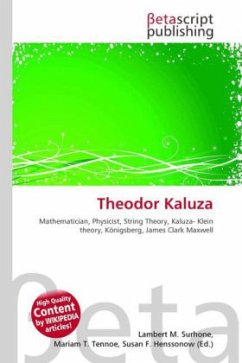
Physicist
Versandkostenfrei!
Versandfertig in 6-10 Tagen
30,99 €
inkl. MwSt.

PAYBACK Punkte
15 °P sammeln!
High Quality Content by WIKIPEDIA articles! Most material a student encounters in the undergraduate physics curriculum is based on discoveries and insights of a century or more in the past. Alhazen's intromission theory of light was formulated in the 11th century; Newton's laws of motion and Newton's law of universal gravitation were formulated in the 17th century; Maxwell's equations, 19th century; and quantum mechanics, early 20th century. The undergraduate physics curriculum generally includes the following range of courses: chemistry, classical physics, astronomy, physics laboratory, elect...
High Quality Content by WIKIPEDIA articles! Most material a student encounters in the undergraduate physics curriculum is based on discoveries and insights of a century or more in the past. Alhazen's intromission theory of light was formulated in the 11th century; Newton's laws of motion and Newton's law of universal gravitation were formulated in the 17th century; Maxwell's equations, 19th century; and quantum mechanics, early 20th century. The undergraduate physics curriculum generally includes the following range of courses: chemistry, classical physics, astronomy, physics laboratory, electricity and magnetism, thermodynamics, optics, modern physics, quantum physics, nuclear physics, particle physics, and solid state physics. Undergraduate physics students must also take extensive mathematics courses (calculus, differential equations, advanced calculus), and computer science and programming. Undergraduate physics students often perform research with faculty members.












